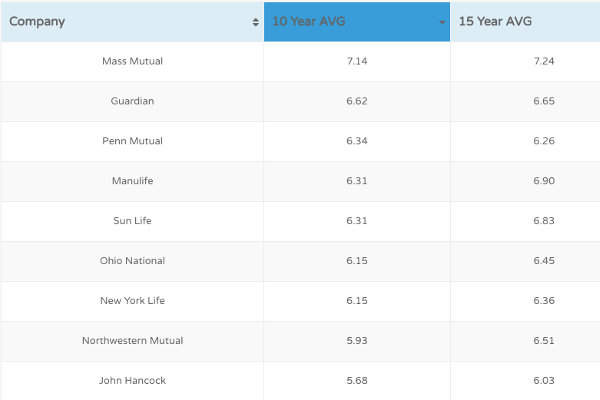Welcome to the Top Whole Life Insurance blog, where we provide valuable insights and information about various types of life insurance. In this article, we will delve into the topic of indexed universal life insurance (IUL) and explore the impact of investment performance on the cost of this type of policy. Specifically, we will focus on the IUL life insurance cost and how it can be influenced by the performance of the underlying investments.
The cash value in an IUL policy can be used for various purposes, such as supplementing retirement income, paying for college tuition, or covering unexpected expenses. Additionally, the death benefit provides financial protection for your loved ones in the event of your passing.
The cash value component of an IUL policy is invested in a variety of assets, including stocks, bonds, and other financial instruments. The performance of these investments directly affects the growth of the cash value and, consequently, the cost of the policy. If the investments perform well, the cash value will increase, and the policyholder may be able to enjoy lower premiums or higher death benefits. On the other hand, if the investments underperform, the cost of the policy may increase.
It's important to note that the performance of the underlying investments is subject to market fluctuations and can be influenced by various factors such as economic conditions, interest rates, and geopolitical events. Therefore, it's crucial to carefully consider the investment options available within the IUL policy and consult with a financial advisor to make informed decisions.
What is Indexed Universal Life Insurance?
Indexed universal life insurance is a type of permanent life insurance that offers both a death benefit and a cash value component. What sets IUL apart from other types of life insurance is its ability to link the cash value growth to the performance of a specific index, such as the S&P 500. This means that the policyholder has the potential to earn higher returns on their cash value if the index performs well.The cash value in an IUL policy can be used for various purposes, such as supplementing retirement income, paying for college tuition, or covering unexpected expenses. Additionally, the death benefit provides financial protection for your loved ones in the event of your passing.
The Cost of Indexed Universal Life Insurance
When considering the cost of indexed universal life insurance, it's important to understand that there are several factors that can influence the premium amount. These factors include the policyholder's age, health, gender, and lifestyle choices. However, one key factor that can significantly impact the cost of an IUL policy is the performance of the underlying investments.The cash value component of an IUL policy is invested in a variety of assets, including stocks, bonds, and other financial instruments. The performance of these investments directly affects the growth of the cash value and, consequently, the cost of the policy. If the investments perform well, the cash value will increase, and the policyholder may be able to enjoy lower premiums or higher death benefits. On the other hand, if the investments underperform, the cost of the policy may increase.
The Relationship Between Investment Performance and Cost
The relationship between investment performance and the cost of indexed universal life insurance is a crucial aspect to consider when purchasing this type of policy. The performance of the underlying investments can have a significant impact on the overall cost of the policy over time.Secure tomorrow, invest today!
Click below to get a Quote Now!
Get Me A Quote When the investments perform well and generate positive returns, the cash value of the policy increases. This can lead to lower premiums or the ability to maintain the same premium amount while increasing the death benefit. On the other hand, if the investments underperform and generate negative returns, the cash value may decrease, and the policyholder may be required to pay higher premiums to maintain the desired death benefit.It's important to note that the performance of the underlying investments is subject to market fluctuations and can be influenced by various factors such as economic conditions, interest rates, and geopolitical events. Therefore, it's crucial to carefully consider the investment options available within the IUL policy and consult with a financial advisor to make informed decisions.
Maximizing Investment Performance for Lower Costs
To maximize investment performance and potentially lower the cost of indexed universal life insurance, there are several strategies that policyholders can consider:- Diversification: Diversifying the investments within the IUL policy can help mitigate risk and potentially improve overall performance. By spreading investments across different asset classes and sectors, policyholders can reduce the impact of poor performance in any single investment.
- Regular Monitoring: Regularly monitoring the performance of the underlying investments is essential to identify any potential issues or opportunities. Policyholders should stay informed about market trends, economic indicators, and other factors that can impact investment performance.
- Rebalancing: Rebalancing the investment portfolio within the IUL policy can help maintain the desired asset allocation and potentially improve performance. This involves periodically adjusting the allocation of investments to align with the policyholder's risk tolerance and investment objectives.
- Working with a Financial Advisor: Seeking guidance from a qualified financial advisor can provide valuable insights and expertise in managing the investments within an IUL policy. A financial advisor can help assess the policyholder's risk tolerance, recommend suitable investment options, and provide ongoing monitoring and guidance.




